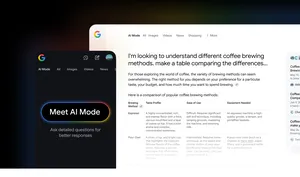A search engine for nature sounds: Google and QUT launch A2O Search

When scientists evaluate the health of an ecosystem, they look at all kinds of signals and patterns. Scientists might want to understand how an ecosystem recovers after a fire or restoration effort, or whether threatened or invasive species are present in an area.
Birds – and their sounds and songs – are an important indication of whether a habitat is working in symphony.
Under the Digital Future Initiative, we’ve been working with QUT to develop AI solutions to automatically detect and map wildlife sounds with greater efficiency and accuracy, starting with the threatened Glossy Black Cockatoo.
Today, we’re expanding this collaboration with the launch of A2O Search. This new sound search engine, built with Google AI, allows researchers and scientists to search through millions of hours of Australian wildlife audio collected by the Australian Acoustics Observatory (A2O).
Traditionally, researchers analysed wildlife audio by manually listening through hours of audio clips to identify an animal sound. This painstaking and laborious process posed barriers for research and has hindered land management decisions. Even with the introduction of machine learning tools for classification, collecting training data is an enormous undertaking and limits the number and kinds of questions that scientists can answer.
So we asked: How can we help ecologists and conservationists efficiently answer questions that have never been asked before?
With help from Google AI and automatic audio recognition, researchers can now search for animal sounds in the A2O collection in seconds. Researchers can simply upload a recording of an animal into the A2O Search tool to find similar sounds from across a large database. Users can see exactly where results came from, and filter to specific locations and date ranges. Additionally, users can download a CSV of results to use in other systems.
An audio clip of a kookaburra laughing

The new sound search engine will allow researchers to more efficiently and accurately draw insights and connections between species, and explore patterns in the ecosystem at large. It will also enable researchers to share and study species’ sounds that haven’t previously been monitored or classified, such as sounds that indicate nesting, mating or territorialism. For example, the tool can distinguish between adult and juvenile calls, which are strong signals for population survival and growth. The tool is already identifying koala sounds and will continue to expand to more non-bird species.
A20 Search results showing audio files of the superb fairywren and locations on a map

As the A2O collection expands, audio search will offer a richer, fuller view into changing Australian ecosystems. With the threat of deforestation, invasive species and bushfires, improving access to information that might aid conservation efforts is more crucial and valuable than ever.
For this reason, we built the search tool to be open sourced, so the broader research community can benefit, contribute and build on our efforts. We hope this initiative provides a new platform for researchers, scientists and governments to better understand Australian wildlife, so we can work together to help Australia’s treasured ecosystems survive and thrive in the future.
If you’d like to give A2O Search a whirl, visit search.acousticobservatory.org

